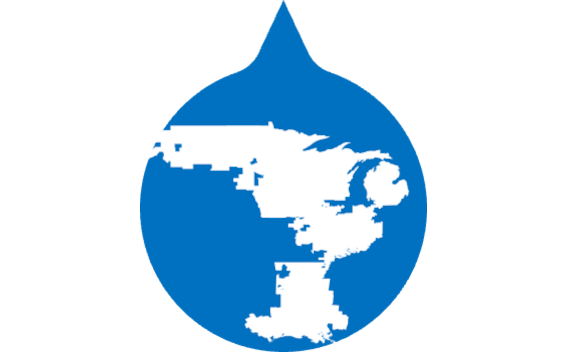What is Resource Adequacy?
Resource adequacy (RA) is an assessment of whether the current, or projected, resource mix is sufficient to meet capacity and energy needs for a particular grid. The resource mix includes all resources able to provide capacity and energy to the system, including traditional, bulk resources, as well as distributed resources. Adequacy assessments are used to identify potential shortfalls in the availability of resources across different time frames; from long-term planning (5 to 20+ years) to seasonal and day-ahead assessments. As the RA look-ahead time approaches real-time operations, options to address identified shortfalls are fewer and more expensive.
Read More:
What does it mean to have adequate resources?
Adequacy criteria are probabilistic, meaning that any given system that meets such criteria is expected to have sufficient supply and demand-side resources to meet demand across all time periods with a certain level of confidence.
Adequacy criteria generally accept that some periods of scarcity may occur, albeit at a very low probability. Typically, scarcity events occur during times when a confluence of system conditions arise with a low likelihood of occurrence in combination. These combinations of conditions are generally considered sufficiently rare, that additional investment in supply resources is not economically viable. In fact, certain power systems derive their adequacy criteria economically, searching for the limit of cost-justifiable actions to ensure reliability. Whether searching for an optimal level of adequacy, or projecting resource needs to meet an adequacy target, it is critical that a realistic range of conditions is considered in RA assessments. It should be noted that loss of load resulting from external factors such as storm damage, wildfires, or other natural disasters that interrupt delivery of power are not generally considered in resource adequacy assessments today, however, this may need to evolve in the future.
Read More:
How is resource adequacy changing?
The shift away from conventional thermal generation towards an increasingly diverse set of resources that includes wind, solar, battery storage and demand flexibility brings several new factors into consideration when assessing the availability of resources. Similarly, changes in underlying common-mode risk drivers such as extreme weather and fuel supply (particularly with an increased reliance on gas networks) require a reassessment of the heuristics principles that are applied by planners in current practice. Further, the interdependence between neighbouring systems is increasingly relied upon to ensure adequacy, bringing questions of deliverability into focus.
Changing Generation Mix
In many regions resource mixes are rapidly evolving from being mainly composed of traditional thermal generation units, including coal, nuclear, and natural gas-fired generation, as well as hydro power, to include growing shares of weather-dependent renewable generation, mainly wind, and solar power. Energy storage resources, distributed energy resources, and flexible demand are also increasingly contributing to RA. The adequacy contributions of these new resources may be more complex to evaluate compared to other resources.
Changing Demand and Net Demand Characteristics
The growth in certain types of generation, such as solar power, affects net load shapes, which can lead to increasingly steep net load ramps at times of increasing or decreasing solar outputs. This can create new periods of stress for power systems where sufficient capacity may be installed, however ramping capabilities may be insufficient to meet net load.
Electrification of various parts of the economy, including transport, industry, and hydrogen generation has the potential to affect load shapes and electricity consumption, however, new opportunities may arise if these assets are able to provide demand-side flexibility. Additionally, climate change impacts on demand may also need to be considered, particularly in studies with greater look-ahead horizons.
Energy-Limited Resources
Today, it is becoming increasingly necessary for many systems that have historically focused on capacity adequacy to consider both capacity and energy adequacy. This is a result of the growth in the shares of energy limited resources, such as energy storage, as well as growing awareness of the importance of modelling fuel limitations and availability on adequacy. Transmission capacity and constraints, reflecting limits in the capacity to get energy from where it is generated to where it is needed, may also play an increasingly important role in RA.
Is the risk of capacity shortages only during the peak demand period?
While the annual peak demand is most likely the period of highest risk, capacity shortfalls may also occur at other high daily peaks and in the period surrounding the peak hours. Some systems experience peaks in both the winter and the summer, reflecting heating and cooling load. Increasingly, the greatest likelihood of a capacity shortage occurs at the peak net-load interval. Net load represents the “net” demand not served by wind and solar generation, and which must be met by traditional resources. Risk can also arise during spring and fall when maintenance outages typically occur. In order to better understand system firm load shedding risk, modelling and assessing RA is often conducted using hourly data covering many possible demand scenarios, rather than just focusing on the daily peak. The importance of considering scenarios other than peak demand is highlighted in events such as the 2020 summer rolling outages in California, where shortages occurred at a time that did not coincide with the typical peak demand period of either day or year.
READ MORE
EPRI’s Research and Approach to RA
EPRI’s research aims to understand how resource adequacy may need to adapt to meet the needs of future.
EPRI’s Resource Adequacy for a Decarbonized Future Initiative has addressed many topics relating to the need for evolving RA methods to meet evolving power systems and provides a range of public reports on RA metrics, models, tools, scenario generation, data collection, and RA gaps, as well as a range of case studies where new methodologies have been tested.
EPRI’s ongoing research projects are continuing to evaluate a range of aspects of evolving resource adequacy needs:
-
Resource adequacy and flexibility metrics and practices: providing up to date information on metrics and practices for resource adequacy and flexibility assessment methods.
-
Technology and system component modelling in resource adequacy: looking into new and enhanced models to capture the evolving nature of supply and demand resources, as well as the impact of networks for adequacy studies.
-
Energy systems integration: providing support for modelling of sector coupling as systems decarbonize.
-
Scenario planning for decarbonized future: supporting planners in developing scenarios capturing potential future grid conditions.
-
Resource adequacy methods: identifying and improving on state-of-the-art modelling for adequacy assessment, including improvements in computational performance.
Recent EPRI Resource Adequacy Case Studies
Six case studies of future systems were carried out for different climate and electrification contexts to assess a range of key questions and study tool capabilities that are relevant for each region. All are intended to be future looks at how systems may evolve, and do not replace standard planning studies in the region.
Tools
Resource Adequacy Viewer Tool
Resource Adequacy Viewer Tool (or RAVT) is a calculator and a visualization tool developed at EPRI to analyze results from any RA model. RAVT reads and analyzes RA model outputs and creates visualizations for various RA metrics.

Resource Adequacy Fuel Insufficiency Screening Tool
EPRI has developed a resource adequacy fuel insufficiency screening tool (RAFIS) that examines potential system gas limits and impacts on adequacy. It considers different solutions (gas pipeline, gas storage, dual fuel, and firm contracts) that can help reduce fuel risk.

The purpose of this site is to bring together information to help those trying to assess resource adequacy. It draws on a wide range of work that EPRI and the industry has conducted in response to the challenges arising as power systems evolve. We welcome your feedback and suggestions to make this website increasingly useful to support you and your decisions.





